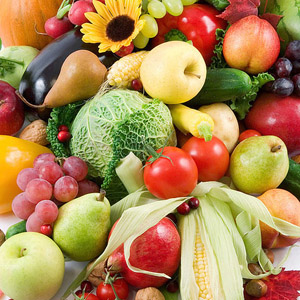98% of the n-6 fatty acids that Japanese intake is linoleic acid. The organism can not synthesize n-6 fatty acids. Therefore, they must orally intake them. According to the National Health and Nutrition Survey in 2010 and 2011, the median of the n-6 fatty acids intake of Japanese were 10.0 g/d (4.3 %E) in male and 8.4 g/d (4.6 %E) in female, respectively. There are no reports required to set the Estimated Average Requirement for healthy people or no reports of dermatitis due to lack of n-6 fatty acids in usual diet, the approximate amount has been set.
Infant
The approximate amount for 0-5 months infant has been set to 4.0 g/d by multiplying the standard mammalian amount 0.78 L/d to n-6 fatty acids concentration of breast milk 5.16 g/L. The approximate amount for 6-11 months infant has been set to 4.3 g/d by calculating the average of the approximate amount of 0-5 months infant and of 1-2 years old child.
Adults and Child
The approximate amount has been set to the median of n-6 fatty acids intake based on the National Health and Nutrition Survey in 2010 and 2011.
Pregnant and Lactation
The approximate amount for pregnant has been set to 9 g/d based on the median n-6 fatty acids intake in pregnant in the National Health and Nutrition Survey from 2007 to 2011. The approximate amount for lactation has also been set to 9 g/d based on the median n-6 fatty acids intake in lactation.
It is not fully understood of the risk of linoleic acid that it is ingested in large amounts because it is easily oxidized than such monounsaturated fatty acids as oleic acid. And it is concerned of the safety of high intakes of linoleic acid because linoleic acid generate such inflammation including substance as prostaglandins and leukotrienes. Although the risk of overdose has been assumed for n-6 fatty acids, the approximate amount has not been set because there are no reports for Japanese subject.
- Use of dietary linoleic acid for secondary prevention of coronary heart disease and death : evaluation of recovered data from the Sydney Diet Heart Study and updated meta-analysis
- n-6 fatty acid-specific and mixed polyunsaturate dietary interventions have different effects on CHD risk : a meta-analysis of randomised controlled trials
- Dietary polyunsaturated fatty acids and breast cancer risk in Chinese women : a prospective cohort study
The Dietary Reference Intakes of n-6 fatty acids in 2015 edition and 2010 edition are following table.
| Gender | Male | Female |
|---|---|---|
| Age | Approximate amount | Approximate amount |
| 0-5 M | 4 | 4 |
| 6-11 M | 4 | 4 |
| 1-2 | 5 | 5 |
| 3-5 | 7 | 6 |
| 6-7 | 7 | 7 |
| 8-9 | 9 | 7 |
| 10-11 | 9 | 8 |
| 12-14 | 12 | 10 |
| 15-17 | 13 | 10 |
| 18-29 | 11 | 8 |
| 30-49 | 10 | 8 |
| 50-69 | 10 | 8 |
| 70- | 8 | 7 |
| Pregnant | 9 | |
| Lactation | 9 |
| Gender | Male | Female | ||
|---|---|---|---|---|
| Age | Approximate (g/d) | Target (% energy) | Approximate (g/d) | Target (% energy) |
| 0-5 M | 4 | 4 | ||
| 6-11 M | 5 | 5 | ||
| 1-2 | 5 | 5 | ||
| 3-5 | 7 | 6 | ||
| 6-7 | 8 | 7 | ||
| 8-9 | 9 | 8 | ||
| 10-11 | 10 | 9 | ||
| 12-14 | 11 | 10 | ||
| 15-17 | 13 | 11 | ||
| 18-29 | 11 | < 10 | 9 | < 10 |
| 30-49 | 10 | < 10 | 9 | < 10 |
| 50-69 | 10 | < 10 | 8 | < 10 |
| 70- | 8 | < 10 | 7 | < 10 |
| Addition for Pregnant | + 1 | |||
| Addition for Lactation | + 0 | |||
References:
The Dietary reference Intakes for Japanese (2015 edition) Lipid (pdf)
THe Dietary reference Intakes for Japanese (2010 edition) Lipid (pdf)

